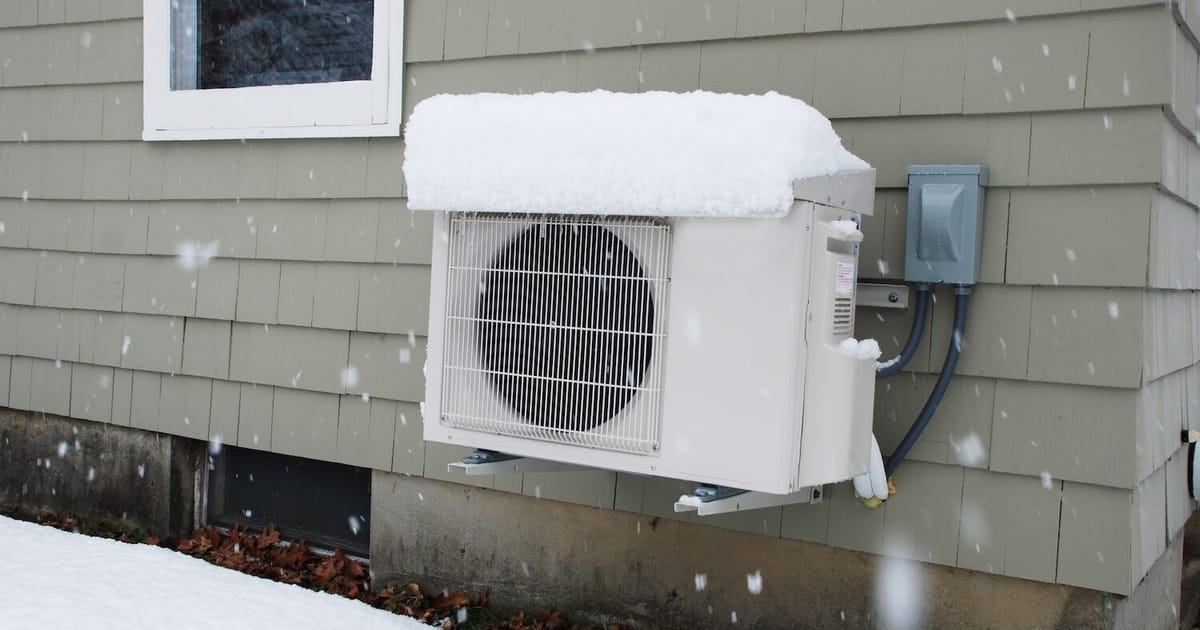Heat pumps sold so fast in Maine, the state just upped its target::undefined
It’s kind of amazing that with a radiator you turn 1kW of electricity into 1kW of heat energy but with a heat pump depending on the efficiency you might get 2kW of heat or even more with the same amount of electricity.
Not really. Heat pump is not creating heat unlike resistive heater. It’s just transporting it. One must remember even though freezing temperatures are cold for humans, for physics and universe those are still relatively high temperature environment. After all 0 Celsius is 273 positive Kelvin degrees. So that is 273 Kelvin forth of heat to pump around. Well say in -30C, still 243 K worth of heat to pump around. So the issue isn’t is there heat, the issue is the practical mechanical and thermodynamic realities of he pumping. Which in practice comes down to can you find suitable refrigerants with suitable phase change characteristics to pump around.
Which for normal ambient temperatures on Earth is “yes”. Just usually matter of how high pressures one has to use and other nasty features of the materials. For example recently even just CO2 has been started to use more again, issue with it mostly being it has to operate at higher pressures than more traditionally used refrigerants. They just don’t call it CO2 in the bizz, it’s refrigerant fluid R744. That works down to -56.6 Celcius given its triple point temperature. So it won’t heat one in antarctic -80C winter, but for most of Earth even in cold climates -56.6 C is plenty. Problem just is it has to always work under high pressure, since in ambient pressures CO2 just sublimated from solid to gas. Pumping around solid blocks of dry ice isn’t very convient for continuous heat exchange process machine.
Which adds some cost to the pump components. On the other hand… CO2 is pretty darn harmless. As long as concentration locally isn’t too high, humans, animals and plants are perfectly used to handling the gas they exhale. It is non flammable, it is green house gas, but it is green house gas we naturally exhale. Some unit leaking it doesn’t change much, since usually CO2 for industrial use is extracted from waste product gas, that would end up in air anyway.
Plus on need be it can be distilled from air, it’s just energy intensive. Which is why “carbon capture” isn’t a bigger thing. We know how to do carbon capture. It’s just energy intensive and thus on climate impacting massive scale energy prohibitive.
deleted by creator
Removed by mod
A split air conditioner is will generally have an indoor component (evaporator) and an outdoor component (condenser).
When the compressor runs, the evaporator will get cold and the condenser will get hot.
A heat pump also has a indoor and outdoor components, along with a new item called a reversing valve. The reversing valve allows the system to switch which component is the evaporator and which is the condenser.
When the compressor runs and the reversing valve is enabled, the evaporator is inside and you get cold air.
When the compressor runs and the reversing valve is disabled, the condenser is inside and you get hot air.
Removed by mod
Isn’t that what most split AC units are currently capable of? At least I’ve seen them almost all with the ability to produce heat when I was browsing for one.
All of the split units I’ve seen are heat pumps.
Heat pump means that it’s reversible, split package is just the physical arrangement of the pieces.
So if I don’t have ducts in my house I can still get a “heat pump” in the form of a mini split system?
If the mini-split isn’t marketed as “cooling only”, then yes.
Let me preface this statement by saying I am a moron… but if the condenser is inside of your house wouldn’t their be condensation dripping inside your house?
Sorry for such a dumb question, but it’s really bothering me and I can’t completely conceptualize how these things work.
They probably have a drain that leads outside, like how some types of window do.
T156 is right, most of the time there is just a catch pan and a drain pipe that dump the water somewhere else.
For more detail, condensers and evaporators get their names from what is happening to the refrigerant in the system. In the summer, the evaporator (inside) will get cold and cause water condensate to form, coming from the air.
This video by Technology Connections is one of the things being referenced in this thread. I haven’t seen this one specifically, but he is very good at breaking down topics into pieces that slowly build on each other.
Here is an alternative Piped link(s): https://piped.video/watch?v=7J52mDjZzto
Piped is a privacy-respecting open-source alternative frontend to YouTube.
I’m open-source, check me out at GitHub.
Mini split you mean? Those are also heat pumps but used in homes that don’t have duct systems installed. So theoretically you get large mini splits on each floor to heat or cool all the spaces. Downside being if you close a door and there’s no mini split in that room, it will be more affected by the outdoor air.
I may be way off here. But I believe a mini split and heat pump are the same thing? At least where I live the term is interchangeable.
Not at all. A mini split is a kind of heat pump, but refers to a specific kind of installation.
Most of these are “air source” heat pumps, but there are also ground source or geothermal pumps that exchange heat using a loop of liquid buried in the ground.
We’re installing a “whole house” air source heat pump to replace our 40yo inefficient gas furnaces and add cooling. This will utilize our existing duct work.
If you don’t have duct work (and can’t without razing your house to the ground and rebuilding) a mini-split is the only option right?
“the” video? He has many on heat pumps. Get watching!
💀
You can get one that can go both directions. Heat in winter and cool in summer.
Is this the reason why they’re so expensive?
Just had a 48btu unit installed. 2,000 sqft, 3 - 9k wall units, 1 - 18k ducted unit. Operational down to -22 F.
$20,000 and then a $4,300 rebate and later a $2,000 tax credit. Down right affordable. Would have been even less if new ductwork didn’t have to be retrofitted.
There are many rebates for their installation. Check your city, state, federal, and utility for kick backs. That’s having a huge effect on demand.
I am confused. I though heatpumps required you to drill down far underground and pump up warm air while pumping down cold. This article makes is sounds like people are just installing A/C units in backwards. Don’t you need to drill something for heatpumps?
Nah man you’re thinking of geothermal systems. Heatpumps is just an AC that among other things can reverse the cold and hot sides so that it also heats the living area









